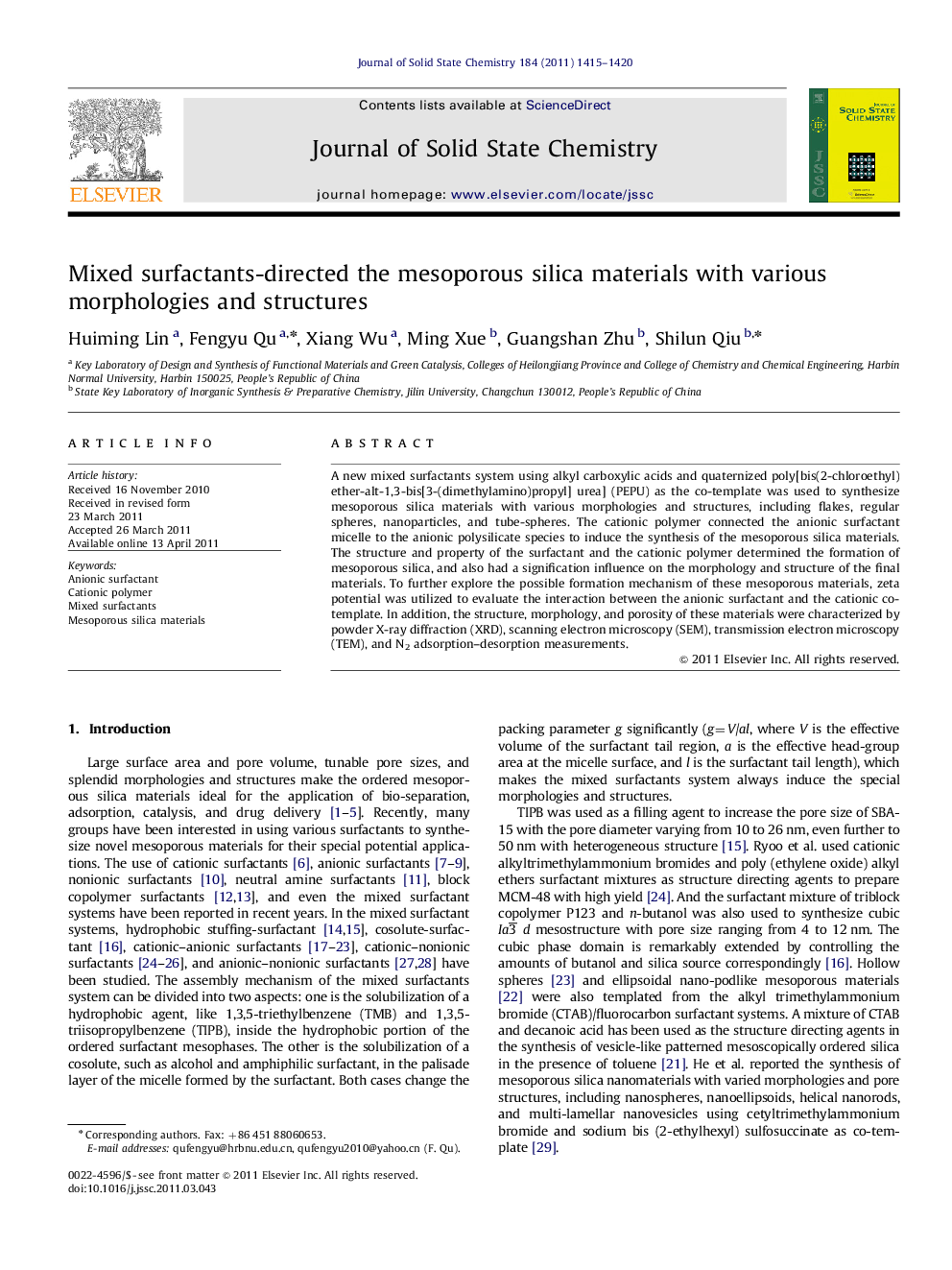| Article ID | Journal | Published Year | Pages | File Type |
|---|---|---|---|---|
| 1329116 | Journal of Solid State Chemistry | 2011 | 6 Pages |
A new mixed surfactants system using alkyl carboxylic acids and quaternized poly[bis(2-chloroethyl)ether-alt-1,3-bis[3-(dimethylamino)propyl] urea] (PEPU) as the co-template was used to synthesize mesoporous silica materials with various morphologies and structures, including flakes, regular spheres, nanoparticles, and tube-spheres. The cationic polymer connected the anionic surfactant micelle to the anionic polysilicate species to induce the synthesis of the mesoporous silica materials. The structure and property of the surfactant and the cationic polymer determined the formation of mesoporous silica, and also had a signification influence on the morphology and structure of the final materials. To further explore the possible formation mechanism of these mesoporous materials, zeta potential was utilized to evaluate the interaction between the anionic surfactant and the cationic co-template. In addition, the structure, morphology, and porosity of these materials were characterized by powder X-ray diffraction (XRD), scanning electron microscopy (SEM), transmission electron microscopy (TEM), and N2 adsorption–desorption measurements.
Graphical abstractA new mixed surfactants system using alkyl carboxylic acids and PEPU as the co-template was used to synthesize mesoporous silica materials with various morphologies and structures. .Figure optionsDownload full-size imageDownload as PowerPoint slideHighlights►A new mixed surfactants system induced the mesoporous silica materials with various morphologies and structure. ► It is a development of the type S−N+I− route of the mesoporous formation. ► Zeta potential was utilized to evaluate the interaction between the anionic surfactant and the cationic co-template. ► The property and amount of surfactant and polymer determined the formation of the mesoporous materials.
